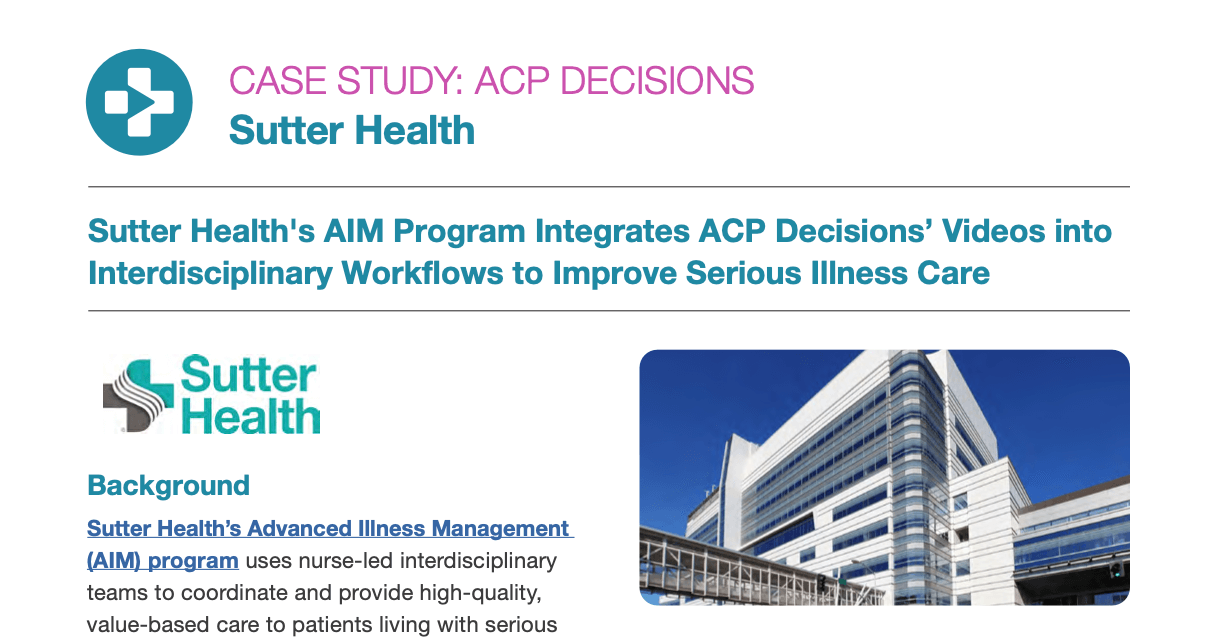IMPLEMENTATION | October 18, 2019
How to Communicate More Clearly with Your Patients & Members
Reading Time: 4 minutes

How often do patients really comprehend what they are being told when their doctor explains a medical condition or procedure? Not often enough. A recent study found that only 5% of cancer patients had an accurate understanding of their prognoses. Unfortunately, if a patient is not clear about their treatment options or does not understand their medical conditions, they cannot make informed health decisions or give truly informed consent.

The Challenge of Limited Health Literacy
Over 90 million people in the U.S. have limited health literacy. This means they may have trouble understanding basic health information, following care instructions, or navigating the healthcare system.
Education, language, culture, access to resources, and age are all factors that affect an individual’s health literacy skills. People who do not read or write well, struggle with communicating or understanding verbal communications about health, speak a different language, or have trouble understanding or using numbers lack proficient health literacy.
Even people with advanced health literacy skills can struggle with complex health information. Someone who is sick, under stress, or in an unfamiliar situation will have a harder time processing and retaining new information.
The Power of Plain Language
Plain language is a powerful tool for overcoming limited health literacy. The proper use of plain language empowers patients to engage in their health care, participate in shared decision making, be more compliant with treatment plans, and make informed medical decisions.
The principles of plain language focus on communication – both verbal and written – that is clear, concise and logically organized. The goal is to communicate information in such a way that patients can understand it the first time they read it or hear it. In written communications, plain language should ensure that readers can find what they need, understand what they find, and use what they find to meet their needs.
Mastering Plain Language
In healthcare, using plain language can be a challenge because medical terminology and acronyms tend to prevail. With some effort and practice, healthcare providers can incorporate plain language into daily practice. The following tips can help you communicate more clearly with patients using plain language principles.
- Know Your Audience
Language that is plain to some people may not be plain to others. That’s why it’s important to take your patient’s current level of knowledge into account. Plain language is not “dumbing down” your message or “talking down” to a patient – it is communicating in a clear way that tells the patients exactly what they need to know without using unnecessary words or expressions. The Health Communication iOS App is a free tool that helps clinicians communicate more clearly with patients in medically complex situations.
- Use Simple Language
Choose words that are simple and familiar to make your message easier for people to understand. Limit jargon and avoid using acronyms. Be sure to define any medical or technical terms you use. The Center for Disease Control’s Plain Language Thesaurus is a great resource for finding simple replacements for complex health terms.
- Make it Actionable and Personal
Patients need to know how to act on the information they receive. Use an active voice to clearly state the actions you want your patients to take. Active voice is where the subject does the action. For example, instead of saying “Once the inhaler is used…”, say “Use your inhaler…”. It is preferable to highlight the positive by telling a patient what he should do rather than should not do. For example, say “Take this medication with food…” instead of “Do not take your medication on an empty stomach.” It is also effective to personalize your message by using second person pronouns. That means referring to a patient as “you” rather than speaking to them in third person as “the patient.”
- Be Concise
It’s important to limit the amount of information you provide at any one time – too much, too fast can be intimidating and overwhelming to patients. Using sentences that are 15 words or less and limiting your communication to 3 or 4 points will make the information you present easier to process and remember. Being concise means focusing on what your patient needs to know and do. Avoid details that would be considered “nice to know.”
- Organize the Information
A key element of plain language communication is to provide the most important information first. To better engage patients, start off with the most significant behavioral or action points. This is where you would share what actions to take and why they are crucial. Also, breaking complex information into understandable chunks will improve clarity. Lastly, try to stick to one topic at a time – it can be confusing if you skip back and forth between topics.

- Use Visual Aids
Research suggests that plain language combined with graphics and other visuals can help patients understand and retain complex medical information. Using visual aids, such as videos, as part of your interaction with patients enhances engagement and shared decision making. Visual aids should be chosen carefully to ensure they are high-quality, adhere to plain language principles, and should be culturally relevant to your audience.
When health information is delivered in a clear, engaging, and personally relevant manner, it promotes understanding, engagement, and self-empowerment for patients at any health literacy level. Plain language is an effective communication practice that will help you communicate more clearly with your patients.
ACP Decision develops evidence-based video decision aids that follow plain language guidelines to provide patients with information they can understand and use to make the best decisions for their health. Contact us to learn more!
You might also like...

Sutter Health’s AIM Program Integrates ACP...
CASE STUDIES, IMPLEMENTATION | < 1 MIN READ




